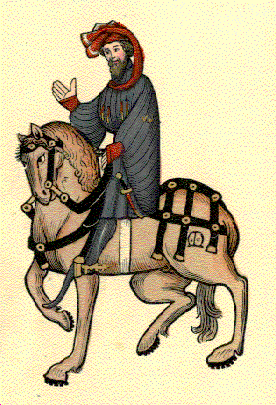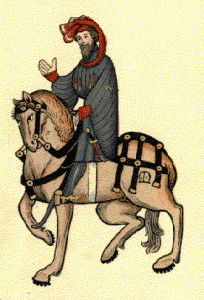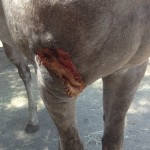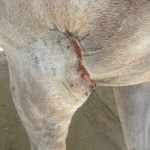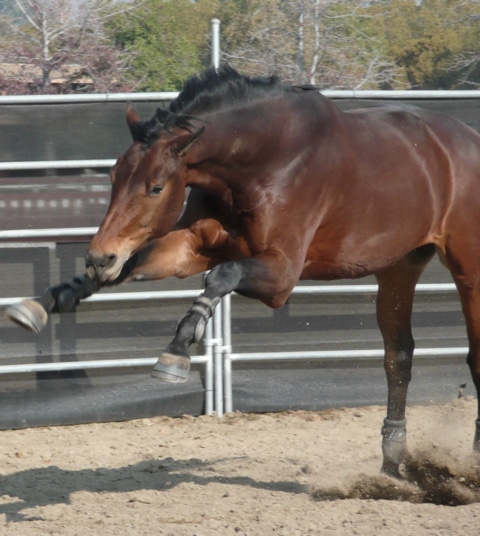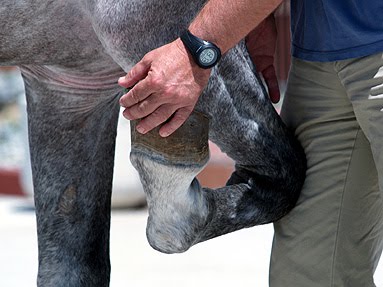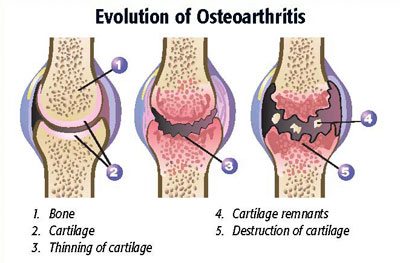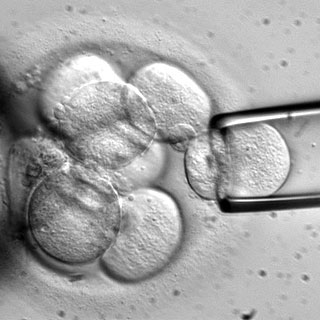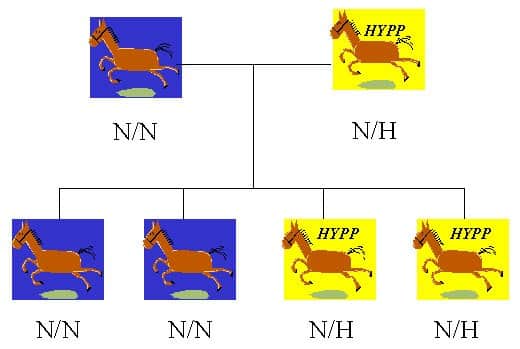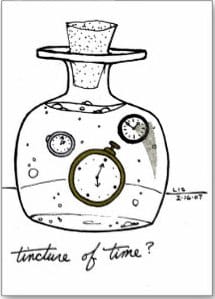 When I read through horse magazines, or go to conventions, I’m just absolutely astounded at the array of products and services that claim to be able to make horses heal faster, stronger, better, more cosmetically, more something (or all of the above). But pretty much nowhere do I see anyone talking about the virtues of the single most important therapeutic weapon in the veterinary tool chest: time.
When I read through horse magazines, or go to conventions, I’m just absolutely astounded at the array of products and services that claim to be able to make horses heal faster, stronger, better, more cosmetically, more something (or all of the above). But pretty much nowhere do I see anyone talking about the virtues of the single most important therapeutic weapon in the veterinary tool chest: time.
Time.
Look, I get it. I understand that you want your horse to heal up from whatever ails him as quickly as possible. I get it that you want him to get well as soon as he can because you care so much about him, or because you have a fence to jump over, or because you have a barrel to turn around, or you need to passage, or whatever. I get that you don’t want him to be deficient in this or that. And I get that you are willing to do just about everything possible to make him heal up stronger and faster than anyone ever thought possible. You can’t just stand there – you have to do something. The thing is, the phrase works the other way, too.
Sometimes you don’t need to do something – you need to just stand there.
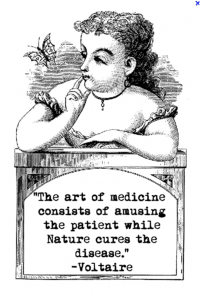 It was way back in the 18th century when the French philosopher, Voltaire (his real name was François-Marie Arouet, so you can see why he wanted something shorter, and maybe a bit more masculine), famously said, “The art of medicine consists of amusing the patient while nature cures the disease.” In veterinary medicine, of course, it’s the client that needs the amusing, not the horse, and, as a result, there sure are a lot of treatments out there for your amu$ement. There’s a common thread that links the vast majority of them: they haven’t been shown to do anything.
It was way back in the 18th century when the French philosopher, Voltaire (his real name was François-Marie Arouet, so you can see why he wanted something shorter, and maybe a bit more masculine), famously said, “The art of medicine consists of amusing the patient while nature cures the disease.” In veterinary medicine, of course, it’s the client that needs the amusing, not the horse, and, as a result, there sure are a lot of treatments out there for your amu$ement. There’s a common thread that links the vast majority of them: they haven’t been shown to do anything.
One of the wonders of living biological systems like the horse (or you and me, for that matter) is the capacity to heal. Otherwise stated, if the body can heal itself, it will heal itself. In fact, the idea that doctors – veterinarians, in the horse’s case – or for that matter, anybody, heals anything is really just an incredible bit of conceit. What we do – when we can – is try to set up a situation where the horse’s body can heal itself, to the best of its ability. And since time is often on our side (with a few exceptions that we’ll talk about in a bit), even if we don’t do anything at all, if it can heal itself, the horse’s body will heal itself, just as long as we don’t get in the way in our race to amuse ourselves. That’s something that’s been known for a long time.
“As tyme hem hurt, a tyme doth hem cure” – (Geoffrey Chaucer, Troilus & Criseyde, mid-1380s).
For many equine maladies, sitting back and seeing how things go for a few days – or even a few months, in the case of more severe problems – is all that you really need to do. Most injuries – and especially wounds, and injuries to the horse’s muscles, tendons, ligaments, or joints – just need the appropriate amount of time to heal. If you give them that time, in fact, they will heal pretty darn well, assuming that the injuries aren’t too bad. As a matter of fact, while many folks are getting amu$ed, most of them will heal pretty darn well in spite of what you do to them. Which brings up my first rule of medicine.
DR. RAMEY’S FIRST RULE: If something needs to heal, the credit for the healing will always go to either the weirdest treatment, the most expensive treatment, or both.
“Time is the healer of all necessary evils.” – Menander, Greek dramatist (342BC-291BC. Or, if you prefer the original Greek: ο χρόνος είναι ο θεραπευτής όλων των αναγκαίων κακά – if that’s spelled wrong, please let me know).
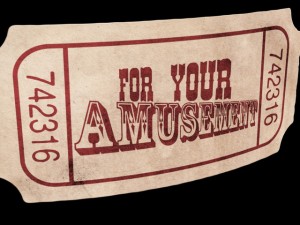 In my experience, the people who most understand that it takes time for injuries to heal are people who have been injured themselves. “Oh, I understand,” they say. “I sprained my ankle and it took forever to heal. I went to physical therapy, I had heat treatments (or whatever), but, really, it just took time.” Still, for many a wound or an injury is an imperative to “do something.” As such, it’s also an open invitation for those looking to pursue your amu$sement.
In my experience, the people who most understand that it takes time for injuries to heal are people who have been injured themselves. “Oh, I understand,” they say. “I sprained my ankle and it took forever to heal. I went to physical therapy, I had heat treatments (or whatever), but, really, it just took time.” Still, for many a wound or an injury is an imperative to “do something.” As such, it’s also an open invitation for those looking to pursue your amu$sement.
Here’s what I think. Before you go off doing something for your horse, you’d like to make sure of one thing. You’d like to make sure that the treatment that you’re giving is either going to help your horse heal 1) Sooner than he would have on his own, or 2) Better than he would have on his own. And if you can’t be sure of that (HINT: Ask for evidence, and don’t get sucked in to therapies that are “promising” or “new” or “alternative”), then you’re probably better off – at least money-wise – just waiting to see how things go.
Let me give you an example. One of the therapies that doesn’t seem to want to die is low-intensity laser therapy (oh, boy, I can see the letters already). It’s advocated for all sorts of things, like wound healing, tendon healing, and even acupuncture.
DR. RAMEY’S SECOND RULE: Combining two forms of pseudoscience, like low-intensity lasers and acupuncture, doesn’t make them better. It’s the “two wrongs don’t make a right” sort of thing.
Anyway, if your horse has a wound – lets say it’s a really nasty wound, on his shoulder – the horse’s body is going to try to get it to heal. And you’re going to worry, as I think it completely normal. I know – from experience, and from reading – that these wounds tend to heal really well. And as long as we don’t do anything to get in
the way of the horse’s wound healing, we’ll have a good result. I’d probably have you hose the wound out (CLICK HERE to read the article that I recently wrote about the benefits of hosing a wound), and maybe put some ointment around the wound to keep the flies off, but mostly, I’d have you leave it alone and let it heal. I could have you come out once or twice a day and use the low intensity laser to treat the wound – or have you pay for my technician to do it – but why? Time is going to heal things just fine, and I think it’s wrong to ask you to pay so that you can feel like you’re doing something. That’s not amusing at all.
“Time, the Phisition [physician] of all.” (H. Peacham Complete Gentleman iv., 1622).
Of course, time doesn’t heal all wounds, and there are certainly some instances when you don’t want to just give things time. Here are a few:
- If you have a mare who is having trouble delivering her foal
- If your horse is showing signs of colic, and is in a lot of pain
- If your horse is having trouble bearing weight on a limb (NOT your garden-variety limp)
- If the bleeding doesn’t seem to want to stop
- If your horse is squinting in pain and holding his eye shut
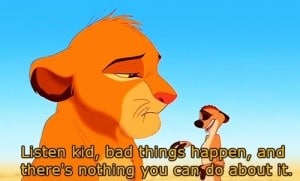 And, there are some things that simply can’t be healed – osteoarthritis comes to mind – but if something can’t be healed, here again, there are a whole bunch of products and services out there for your amu$ement to do things like “maintain,” “support,” “assist,” “improve” – whatever. When it comes to treatments for conditions that nothing can heal (including time) you can amu$e yourself to virtually no end.
And, there are some things that simply can’t be healed – osteoarthritis comes to mind – but if something can’t be healed, here again, there are a whole bunch of products and services out there for your amu$ement to do things like “maintain,” “support,” “assist,” “improve” – whatever. When it comes to treatments for conditions that nothing can heal (including time) you can amu$e yourself to virtually no end.
So in your understandable concern for your good friend, don’t forget the forgotten medicine: time. While you may be more than happy to do “whatever it takes,” keep your wits about you and keep in mind that whatever it takes comes with a cost. For my money, I’d rather you be amused going out for a good night on the town. And your horse would probably rather have some carrots. There does need to be some room for amusement, after all.

